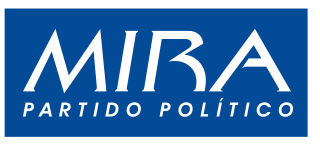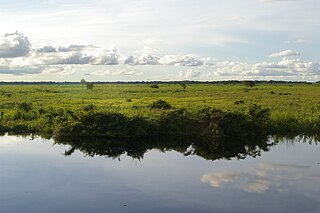
El Paraíso is one of the 18 departments (departamentos) into which Honduras is divided.

Elections in Bolivia gives information on elections and election results in Bolivia.

The Plurinational Legislative Assembly is the national legislature of Bolivia, placed in La Paz, the country's seat of government.

The Independent Movement of Absolute Renovation is a social and political party in Colombia, founded on March 21, 2000 by 51,095 Colombians led by lawyer and former senator Carlos Alberto Baena and Alexandra Moreno Piraquive. The party also has functions as a non-profit organization. It has representation in the Chamber of Representatives and in the Senate of the Congress of the Republic of Colombia, and has also participated in the public corporations of Colombia at a regional level, being stated as the eight most influential political force in the country.

Armando Alberto Benedetti Villaneda is a Colombian politician, currently serving as Senator of Colombia since 2006. He also served as Member of the Chamber of Representatives of Colombia from 2002 to 2006.

Roger Pinto Molina was a Bolivian right-wing politician.
Bolivia held a general election on 6 May 1917, electing a new President of the Republic.
Bolivia held a parliamentary elections in May 1912, electing a new National Congress.
Bolivia held a parliamentary election in May 1914, electing a new National Congress.
Bolivia held a parliamentary election in May 1916, electing a new National Congress.
Bolivia held a parliamentary election in May 1920, electing a new National Congress. The new National Congress was supposed to start sitting on 6 August but was dissolved on 12 July following a coup-d'état.
Bolivia held a parliamentary election in December 1920, electing a new National Congress.
Bolivia held a parliamentary election in May 1923, electing a new National Congress.
Bolivia held a parliamentary election in May 1925, electing a new National Congress.
The Bolivian National Convention of 1938 was an elected constituent assembly held from May 23 to October 30, and charged with rewriting the constitution of Bolivia. President David Toro called for the National Convention in 1937, but had been replaced by Germán Busch by the time it was held. Voter rolls for electing Convention members were opened in August 1937, and the vote was held in March 1938.

Legislative elections were held to elect members to both chambers of Congress in Colombia on 9 March 2014. The nationwide constituency for the 102-member Senate was contested, as well as the 166 seats of the House of Representatives, plus the delegates to the Andean Parliament. There were 773 candidates for the Senate, 1528 candidates for the House of Representatives, and 23 candidates for the five Colombian seats in the Andean Parliament. 32,795,962 Colombians had been registered to vote in the elections by the cut-off date of 25 January 2014.

Luis Aldunate Carrera was a Chilean lawyer who served as minister of finance (1881–1882) and minister of foreign affairs (1882–1884). He was a member of the Chamber of Deputies of Chile (1876–1885) and Senate of Chile (1885–1891).

María de Echarri y Martínez was a Spanish catholic propagandist and columnist, advocate of feminist causes.

The Cave of Maltravieso in Cáceres, Extremadura, Spain, was discovered in 1951. It shows traces of human occupation from the Middle Paleolithic. It contains cave art, most notably a total of 71 hand stencils, enumerated in the 1990s using ultraviolet photography, but also linear designs and some animal paintings. In a 2018 study based on uranium-thorium dating, a hand stencil from the Cave of Maltravieso was dated to 64,000 years ago. This would make it Middle Paleolithic art, predating the presence of European early modern humans, with important implications for Neanderthal behavior.















